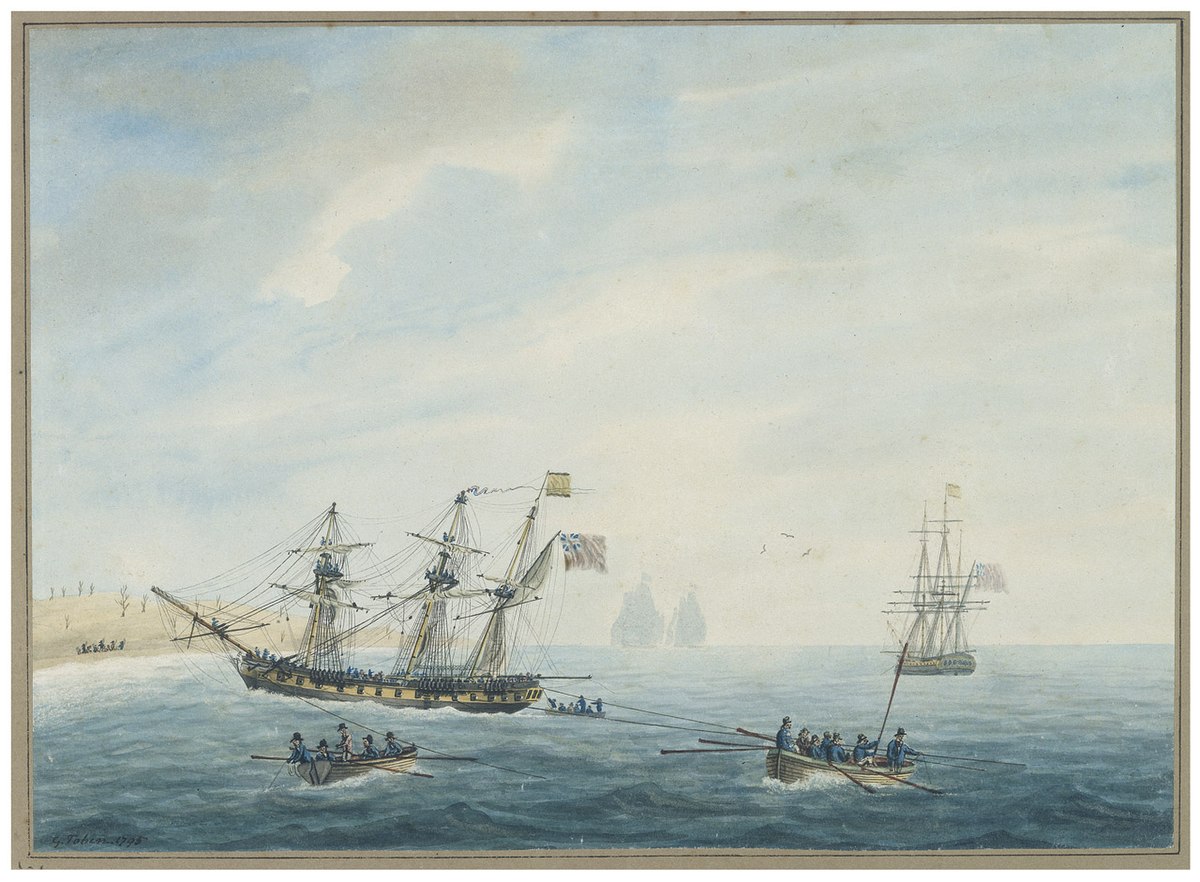Warping is throwing an anchor either manually for a small ship or by rowing the anchor out and dropping it farther away for a larger ship. Then the ship would reel it to change position. Good for maneuvering in harbor. Etymologically related to “throwing” and essentially threading a needle across the sea.
Warp factor get you asses in the rowboat. Engage.
Would love to hear an expert talk be about this more. It’s an interesting idea, but seems like it would be limited in usefulness to small adjustments.
I stumbled on it when figuring out just how the hell tall ships docked and undocked without tugs. Turns out they did use tugs in the form of rowboats but they also extensively used shoreside rigging and warping.
Edit: and I should add, they very rarely actually docked in the first place because it was such a pain in the ass, so they used tenders instead mostly
This also bugs me in movies whenever someone is kicked off the boat, but they’re given a small rowboat and some provisions. Like, that wasn’t an extra boat. It serves a purpose on the ship, and everything that takes up space on a boat is precious. A “spare” rowboat could be the difference between life and a horrible death. It could be months before they find a port where they can buy a replacement rowboat.
deleted by creator
deleted by creator
I had no idea this had a name! When I was a small child we lived by the coast and my dad had a small yacht, one day I remember the keel lodged on a sandbar and he used the anchor to pull it free. Unfortunately we moved inland when I was 5 and dad sold the yacht.
I guess it would be valuable in shallow water, less useful in the deep ocean, and overall better than being stuck in one place!
Yeah me too. I tried searching around but it’s hard to find something that’s not sci-fi related about this topic. It might also be called “kledging” from what I read, but not sure if that’s the exact same thing.
Have to admit, after reading the title I double checked the community for ‘onion’!
“Prepare to travel by warp.”
“Captain, that will set us back days!”
something-something dimensional anchor
Commencing the naval operation by tooting my Warp Whistle
Thank you Boatswain Underpants. Keep up the good work.

Pipe lay (etc) anchor barges do this today.
There are usually six to 8 anchor winches on the vessel. A tug comes to the barge, picks up the anchor and moves it out to some point while the winch unreels. Repeat for other anchors. Winch in to move the vessel.
This is used for precision movement/placement of the barge.
Many vessels use azipods and Dynamic Positioning System (DPS) these days.
But before DPS much of offshore infrastructure was placed by anchor barges.Those vessels have truly advanced warp drives.
Depends on the quality of the dilithium crystals…
I’ve been kedging for hours and I still don’t think I’m close
Imagine actually moving like this. “Here little ship, take our anchor, we can move another 100 meters and only have to repeat a million times”
Sounds like a lot of work. I have no idea how heavy a ship’s anchor is, but I imagine it would be hard to throw any significant distance.
How does one “throw” an anchor tho
Just have 26 STR and 9 DEX.

Try piercing but hole.
A very strong Scottish guy
For smaller boats, you throw an anchor with your hand like this.
simply put it into a canon.
Does one simply throw a boat anchor with a cannon??
We’ll just use a howitzer to launch the ring into mount doom.
Hear me out
Trebuchet
I would definitely like to see a ship propel itself using a trebuchet and a windlass. Not enough to try building one, but still.
Doesn’t this defy the laws of physics?
A trebuchet primarily transforms downward motion (of the counterweight) into forward motion, so it would actually work - the trebuchet doesn’t push the ship back as much as it pushes its load forward. This is particularly so if your trebuchet has wheels and you have room on your ship to accommodate it rocking back and forth when firing.
Edit: Thinking about it this technique would work even with something that does impart equal backwards force on the ship when firing a projectile, because there is considerably more force involved in winching the ship towards the anchor than what is involved in actually moving the anchor. You aren’t pulling against the inertia of a free floating anchor after all, you’re pulling against the ground the anchor has hooked into.
I’ve got a really wild idea: what if you change the shape of the anchor so that it’s actually getting resistance against the water itself instead of having to hit the sea floor. You’ll have to pull it out if the water once you’re done moving it and then drop it in again. Maybe put it on the end of a big stick. I’m thinking about calling this type of anchor an “oar.”
I bet you could get a bunch of money for a CGI prototype of your new green cargo ship.
i would presume that would be what one is to do. It seems the logical solution here.
If you do it in water it’s not as heavy.
But where did they get the dilithium?
Two lithium rocks
The rope attached to the anchor chain is called the “warp”. Hence warping.
This is something to propose for Wikipedia’s April 1st front page…
I’m a little sad that I didn’t get to see the HMS Enterprise with warp nacelles.
Wait till he hears about looms!
Hey warp and weft is why I mentioned threading a needle across the sea.








